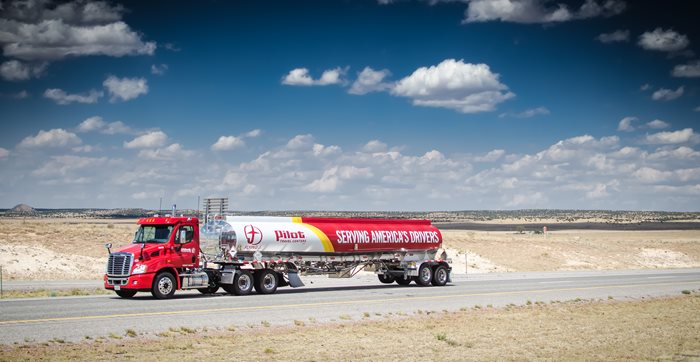
A lot of professional drivers out there are interested in pulling tankers, but may be a little intimidated by all the valves, levers and quite frankly, the dangerous liquids that are hauled in those tankers! I'm here to tell you, it's not that complicated (I learned to do it) and the money is usually better! Schneider National advertises on their website that tanker drivers make up to $10,000 more than other driving jobs there. Also, most tankers are pulled by daycabs so there are more local routes that get you home every night.
I hauled petroleum (gas, diesel, heating oil and kerosene) during the 12 years I spent with tankers. The training took about 30 days for me to get certified. The company I worked for wasn't the one certifying me, but the gasoline terminals that I loaded at did so. There were 7 different terminals, each with different loading equipment, computer screens, meters and safety procedures, so it was a little tough in the beginning. The Exxon terminal had the strictest procedures so I concentrated there first and the other terminals fell into place.
Most products that are transported by tankers are hazardous materials so you'd better have that endorsement as well as the tanker endorsement before applying for a job. Besides petroleum products, food grade products (egg yokes, flour, milk and orange juice to name a few) and chemicals are transported on tankers. With the addition of Blue Def (Diesel Exhaust Fluid) and ethanol in recent years, more and more tanker jobs are being created.
Driving a tanker is a little different too. You have to be aware of the surge of liquid as you come to a stop. There have been instances of this surge of force pushing the truck into a busy intersection and causing a crash. Not even the brakes on an 18-wheeler can stop that kind of force. Gasoline tankers have 4 or 5 separate compartments in order to carry different grades of gasoline and/or diesel at the same time. This, along with baffles (dividers) inside the compartments helps to minimize the liquid from sloshing around. It's better to have your compartments full. This prevents unnecessary surge.
The valves and levers on a tanker can be a little confusing. Just keep in mind of the different kinds and how they operate. Gate valves are round; lefty loosey, righty tighty on those. Butterfly valves are straight handle levers. They are closed when they are perpendicular to the hose or piping they're controlling and open when they are in the parallel position. There are others, but these two are the most common that one will see.
In closing, tanker work is very clean and reasonably easy work once you become experienced. The hardest labor involved is picking up the hoses. And there are times when even the most experienced tanker yankers get sprayed with product. So never be over confident and always practice proper safety procedures and carry a change of clothes!